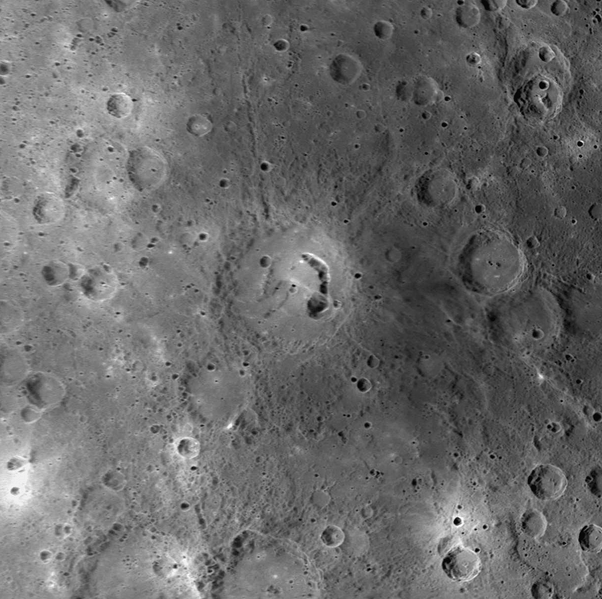Image: Picasso crater

Description: Instrument: Narrow Angle Camera (NAC) of the Mercury Dual Imaging System (MDIS) Resolution: 500 meters/pixel (0.31 miles/pixel) Scale: The diameter of Picasso is 133 kilometers (83 miles) Projection: This image is a portion of the NAC approach mosaic from Mercury flyby 3. It is shown in a simple cylindrical map projection. Of Interest: The crater pictured in the center of this image was recently named Picasso, in honor of the Spanish painter and sculptor Pablo Picasso (1881-1973). This crater, first imaged during MESSENGER's third Mercury flyby, has drawn scientific attention because of the large, arc-shaped pit located on the eastern side of its floor. Similar pits have been discovered on the floors of several other Mercury craters, such as Beckett and Gibran. These pits are postulated to have formed when subsurface magma subsided or drained, causing the surface to collapse into the resulting void. If this interpretation is correct, pit-floor craters such as Picasso provide evidence of shallow magmatic activity in Mercury's history.
Title: Picasso crater
Credit: http://messenger.jhuapl.edu/gallery/sciencePhotos/image.php?gallery_id=2&image_id=382
Author: NASA/Johns Hopkins University Applied Physics Laboratory/Carnegie Institution of Washington
Usage Terms: Public domain
License: Public domain
Attribution Required?: No
Image usage
The following page links to this image:

